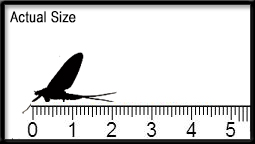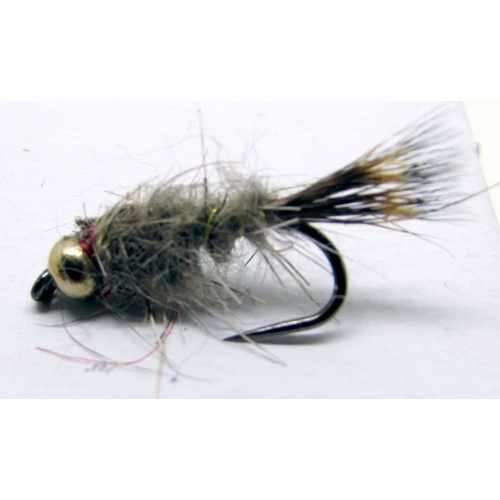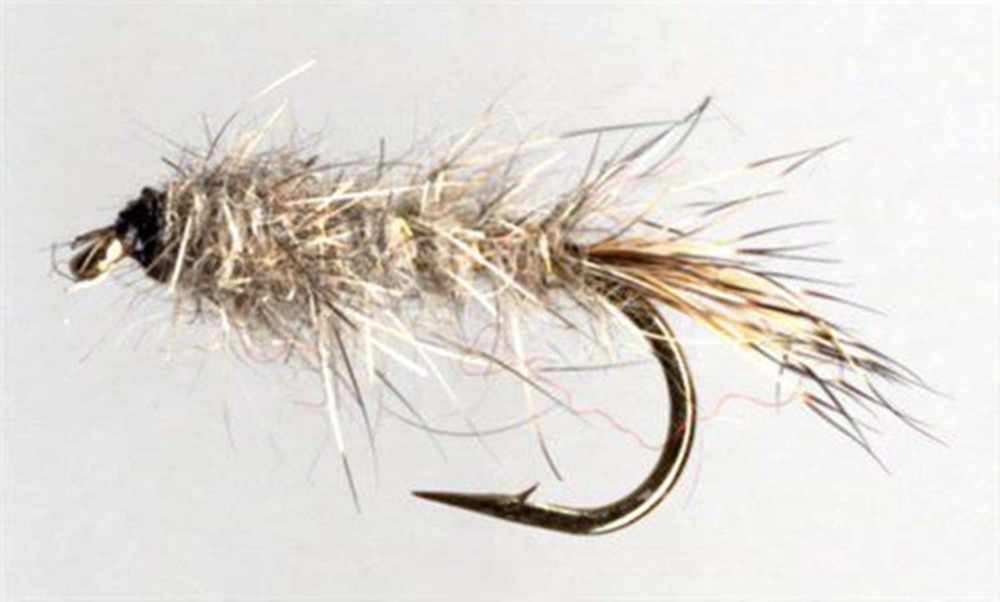Rhithrogena Germanica - March Brown Trout Flies
For centuries the March brown dun has figured prominently in angling writing, but it is rarely if ever seen on the majority of rivers and streams and does not appear on stillwaters. The March brown is "probably the most famous of all British mayflies", having been copied by anglers to catch fish for over 500 years
In the British Isles, the range of R. germanica includes the River Tweed and River Don in Scotland, the River Coquet in England, the River Wye in Wales and the River Liffey in Ireland. Typically these are fast-flowing northern and western rivers with stony beds are not found in Southern UK. In late March and early April the main hatches occur, often with duns coming off in waves spread over two or three hours. It is unusual for one of these bursts of activity to last much more than fifteen minutes so be prepared as the fishing can be mad when this hatches occur.
The March Brown Fly Details
| Family | Ephemeroptera |  |
| Body Length | ||
| Body Length | 0.5" 12mm | |
| No of Tails | 2 | |
| Usual Hatch Time | Evenings | |
| Body Colour | Dark Brown | |
| Wing Colour | Mottled Brown |
 |  |
Nymphs, Wet Fly, Dry Fly and Spinner Imitation Patterns
Available in Fly Size(s) Available in Fly Size(s)
10, 12, 14, 16.
10, 12, 14, 16.
Specific March Brown Dry Flies
For centuries the March brown dun has figured prominently in angling writing, but it is rarely if ever seen on the majority of rivers and streams and does not appear on stillwaters. The March brown is "probably the most famous of all British mayflies", having been copied by anglers to catch fish for over 500 years
R. germanica was first described by Alfred Edwin Eaton based on a single male imago collected from the River Rhine at Laufenburg, Switzerland. Its current distribution in Switzerland only extends to a few tributaries of the Rhine.
Rhithrogena germanica is widespread across Central and Northern Europe. It is under threat across Europe, and Great Britain may be a stronghold for the species. In the British Isles, the range of R. germanica includes the River Tweed and River Don in Scotland, the River Coquet in England, the River Wye in Wales and the River Liffey in Ireland. Typically these are fast-flowing northern and western rivers with stony beds are not found in Southern UK. In late March and early April the main hatches occur, often with duns coming off in waves spread over two or three hours. It is unusual for one of these bursts of activity to last much more than fifteen minutes so be prepared as the fishing can be mad when this hatches occur.
The nymph is a stone clinger and not readily available to trout except during a hatch. March brown nymphs prefer the fast-flowing runs and glides, unlike the agile-darters which are usually found in greatest concentration near the margins or in weed beds. In deeper water trout seem to take mainly the nymphs as they ascend and struggle through the surface film, whereas in shallow stretches they are often seen rising to the floating dun. Use a size 12 March Brown nymph or March Brown Spider or as an alternative size 12 Gold-ribbed Hare's Ear nymph, fished just below the surface. These are is usually an effective imitation when march browns are hatching. You can frequently see large quantities of March Brown spinners during the day.
The emerging adults are vulnerable to predators, and so their emergence is very fast; the whole process of moulting and taking flight can take as little as 30 seconds!






